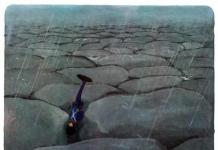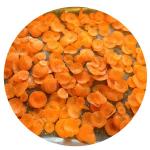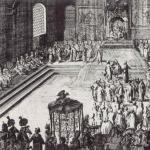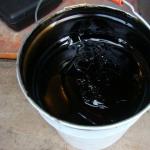Some people have a strange, but very remarkable and colorful hobby. It is called assembling ship models from wood. What do you need to make one like this? beautiful thing. Creating a wooden model is not so easy. From this article you will learn how to create one out of wood with your own hands. And we will also do small excursion into history.
Francis Drake
Many history buffs know the name of the “Iron Pirate”; his homeland was England. He became the captain of a sailing ship at just 16 years of age. At first he was a ship's priest, and then a simple sailor. But his fame really exploded when he became a brave and very formidable pirate. In the 16th century, he made quite a few voyages and took part in a considerable number of battles.
Golden Hind
At the moment of dawn of fate, several sailing ships arrived on his property. His main flagship was the Pelican. This ship was a five-deck, three-masted ship. There were 20 artillery weapons on board. All kinds of maritime stories rarely tell us that a ship that already has a name can be renamed, but it was with the Pelican that, by the will of fate, such a story happened. In 1578, Francis Drake changed the name of this ship to "Golden Hind" (in Russian this name sounds like "Golden Hind"). It was under this second that it was inscribed in sparkling gold letters in world history seafarers. Francis Drake performed quite a few breathtaking deeds on it, which were later recounted in history and adventure books.
It is such wonderful ships that make many people assemble wooden ship models with their own hands. Drawings of many similar designs can often be found on the Internet. So, inspired by the ancient history of navigation, we will learn from this article information on how to do something similar.
DIY wooden ship model: from beginning to rainbow horizons
In fact, the history of modeling consists of several stages. Moreover, each of these stages is associated with several characteristics. A lover of miniature shipbuilding must be able to modify available materials. It is also important to expand the choice of modeling objects. After he has developed sufficiently, then he may develop mass production models. The next stage will be the development of bench exhibition modeling from the kits that he already has. Subsequently, it can develop to the formation of individual segments. It could be anything - from ship models and even to copies of individual motorcycles, trucks, as well as all kinds of other cars.

DIY wooden ship models: drawings, instructions, tools
So, well, let's start creating such a ship. Carving prefabricated wooden ship models is not the easiest task. You will need many tools for this. Among them are: a knife, a chisel, a hammer, a block (and, if necessary, a saw), thin cloth, superglue, a long wooden spike, a rope, a drill. In addition to this, you will need two more very important parameters. Firstly, it is time, and secondly, an important quality of those people who create prefabricated models of ships from wood is patience.
Carving of a ship from wood
First you have to work with a chisel. You should file everything plus remove the old bolts that have a flat head. It won't take you much time - just two minutes. In these two minutes, the pre-processed block will later become a boat. Now you need to clean the block. You should carefully scrape off the bark. Hold the block itself directly towards the tool. Let's take the standard design as an example for our small ship models, which we will build according to the principle below. Take a pencil and sketch a preliminary sketch on a block. Following this, process the block sharp knife. The tilt of the blade itself should be at an angle of about 10 degrees. When you plan, keep in mind that this is not the easiest job, so be patient. You should not forget that if for any reason you make a mistake, it will be quite difficult to correct everything. Remove the chips layer by layer, while you should try and process the original block as smoothly as possible. It is important that the top and bottom must be parallel.

Please note that you don't have to throw away the shavings at all. The point is that, in principle, it can be used as additional material as mulch.
Carving of the front and sides of the ship
Well, now we need to draw the front, bottom, and also the back. We will cut them out in exactly the same way as above. It is necessary to make these parts even. In order to get the bow of the ship, you will have to saw off a piece from the front. Following this, you should round off the cut using a knife. When you make the nose, try to tilt the knife blade itself back. It should be directed towards the stern.

Drilling holes and subsequent installation of equipment
You should have several spiers. Therefore, drill a number of holes; they should be slightly larger in size than the beams themselves. It is important that there are not too many holes. Otherwise, you may end up with a crack. And because of a crack, as we know, a serious disaster can occur - a leak. Don't use glue! If you do this then further work will pass with much greater difficulty.
Installing sails on the model
First, decide how many panels you want to have on your final ship. Let's take as a condition that we will have four panels for the first mast and the second, and three for the last. Following this, take several wooden spiers and cut them. Cut the fabric into a trapezoid shape. Then start gluing them together. Make notches on the branches of the sails, fasten each branch with a corresponding notch. Then glue the middle of the edges to the sails. Repeat the same for all masts. It is best if you build the rear mast first, then the middle one, and then the bow one.

Now let's start installing the upper flying sail. Cut out a kite shape from fabric. Take the thread and attach it to the opposite corner of the panel. Leave ends on both sides for all corners. Glue a small piece of thread onto the top of the boat. It should be slightly higher than the bow of the boat itself. Measure from the opposite corner to the middle of the lower branch of the sail on the front mast. Then cut off the thread that you measured and glue the tip to the appropriate place.

You should leave a few threads on each side. Pull them back and glue them straight inside the boat. Then you can cut off the excess rope. Create and attach the back panel in the same way. It should be attached to the back of the rear sail. Measure, cut, and make sure it fits the two tabs. Then glue them at the corners.

Well, now you have learned how to make simple wooden ship models. And although in this article everything is described only in general outline, we hope that it will help you in your future career as a “shipbuilder”. If, of course, you are interested in this. Believe me, this is a worthwhile activity!
Frigate Scarlet Sails
manufacturing
CHINESE JUNK
CHINESE JUNK
Now we have reached the most important part of the site. I will give you approximate dimensions,
since I made the ship by eye and didn’t pay much attention to the dimensions. I didn’t write them down exactly, but there are some. I won't torture you nautical terms because I myself am not good at them, but I will write in a generally accessible language. Well, you know the basic terms. Such as deck, mast, yard, keel. This is where we will begin our work with the keel. But first we will do some preparatory work. We take a sheet of veneer, place it on some kind of plywood or board, and coat it well with glue. We secure it with buttons so that the sheet does not curl when drying. Let's start with the keel, length 45 cm
the height of the front part is 12 cm, the back part is 8 cm. If the height dimensions are larger than anything terrible, you can always cut off the excess. After cutting out the keel, we sand it a little. We will remove the gloss, and if there is a textured coating, we will remove it completely.
Spread glue on one side and leave to dry. You can spread from two, as you prefer. While everything is drying, we mark the ribs of the ship. We make one blank template. The width of the rib is 16 cm, the height is 6 cm. The depth of the slot for inserting the keel is 1.5 - 2 cm. The width of the slot is equal to the thickness of the veneered keel. Next we proceed to veneering the keel. Who doesn't know how it's done
I'm telling you. Veneer mode on strips slightly larger than the width of the keel. We turn on the iron at full power so that the veneer does not burn during veneering. We place the veneer on the keel and smooth it with an iron until it is completely glued. We cut off the excess veneer and sand it with sandpaper packed onto a block.
After we have plywooded the keel, we will make the deck and will make the rest of the ribs of the ship. Deck length 45 cm, width 16 cm. We measure 15 cm on one side, this will be the beginning of the rounding of the bow. From the back we measure 11 cm, this will also be the beginning of the rounding. The width of the rear part of the deck is 4.5 cm. Photo 5 shows the deck. Now we're starting to have trouble with the rest of the ribs. Since our keel is curved with inside then the height of the ribs will naturally change in relation to the inside of the keel to the deck. I will try to explain how best to do this. Myself
I only realized when I made the fifth ship. And so let's get started. We place the keel on a piece of fiberboard as shown in photo 1. We mark 8 cm from the front and also from the back. And we draw stripes on the keel. It should look something like this:
the back side is 8 cm, the front side is 5 cm. On the front of the keel we make a step to support the deck (photo 5). Next, we try on the deck, cut off the excess, and turn it over to the top with the keel. We find the lowest point between the keel and the deck and install the first rib. Immediately make marks on the keel and on the deck where you install the ribs. Let's make the next edge. It will be installed at the mark where the front part of the deck begins to curve.
The rib width is 16 cm. We measure the height from the deck to the keel, taking into account the slot. Example. The width of the rib is 14 cm. The height from the inside of the keel to the deck is 3 cm + the depth of the slot is 2 cm and also 5 cm. Next, we take the first template blank. We place the future rib on the rectangle, combining upper part and right top corner. Draw along the contour. We do the same with the left corner. The height of the workpiece will change but the basic rib configuration
will remain. We also do the back part and one edge between them. After this we make the ribs of the bow of the model. The approximate distance between the ribs is 3 cm. The same is true for the back. After the ribs are ready and adjusted, we glue them, let them fasten and glue the deck.
 When this is all done, we make inserts between the ribs around the entire perimeter. Next, we clean everything up and make bevels on the ribs from the bow and back of the ship. After this, we cut a piece from the veneer sheet to the size of the central part of the ship, coat it with glue, let it dry a little and glue it with an iron. We begin the most labor-intensive work: plywood the bottom of the ship in strips. I have them
When this is all done, we make inserts between the ribs around the entire perimeter. Next, we clean everything up and make bevels on the ribs from the bow and back of the ship. After this, we cut a piece from the veneer sheet to the size of the central part of the ship, coat it with glue, let it dry a little and glue it with an iron. We begin the most labor-intensive work: plywood the bottom of the ship in strips. I have them width is 6 mm. We take the prepared veneer sheet and cut it. After the strips have been cut, it is necessary to process the edges, clean out burrs and minor irregularities. Glue stripes in the central part
of the ship one to one to the bow and to the rear of the ship with an overlap. Pre-apply fresh glue to the gluing area. This is what we got. Now let's clean everything up and start making additional decks. The front part of the deck starts from the beginning of the curve and protrudes 3 cm. The width of the bow part is 9 cm. The width of the part from the curve is 16.6 cm. After gluing, it will be processed, rounded and will be equal to the width of the main deck.
Rear end it also starts from the curve and is 16.6 cm, protrudes by 4 cm. The width of the rear part is 9.5 cm. Additional decks have been made; now we will glue them in the same order (you can also glue them using an iron).
First we glue the front part of the deck. Then we plywood it. After this, we ply the main deck before starting to round and install the back of the additional deck. Next we glue the back part. It does not need to be veneered since it is covered with deck superstructures. The decks are glued, rounded and we move on to making the sides of the rear part of the model. We cut two strips 4 cm wide. You determine the length yourself. Start from the point of curvature. The rear part of the board has a deployed
angle 105 degrees. After the strips have been cut out, we make slits on them in the place where they will be
bend along the contour of the deck and apply glue. Once the glue has dried, we begin to veneer. We cut two strips of veneer to width and glue them with an iron, simultaneously bending them along the contour of the deck. We made the side boards, but since they need to be turned out, we carefully sharpen them at an angle, trying them on to the deck. Then we glue them. Making the back of the side will not be difficult for you. Next we move on to
deck superstructure at the rear of the model. The photo shows what it looks like. The superstructure deck configuration must be integral. A small explanation about the photo. Lateral
the platforms should be 1.5 cm longer towards the back of the model. After we have made the deck, we make an insert with windows and other inserts in the openings for the stairs. When we have all the inserts ready and adjusted, we glue them to the deck and after that we glue the deck itself. The deck was glued and after that we plywooded it. Next we make the following sides of the deck superstructure and an insert with windows. The back of the sides will no longer be unfolded, but at a right angle. After the last deck has been made, glued and veneered, we make
finishing sides. With the rear deck superstructure completed, we move on to the bow of the model. We also make front sides with
at an angle of 115 degrees. They also start from the beginning of the additional deck. The sides were made, installed and glued. Let's move on to making an insert with windows and upper platform. Dimensions of the upper platform. Length 15 cm, (excluding the balcony) width of the front part 12 cm. Protrudes 6 cm. The back part of the platform is slightly wider than the sides by about 7-8 mm on each side. After we have made the platform and the insert with the windows, we glue them. Then we ply the area. Next we make the sides of the central part of the model. We cut 2 strips, ply them on the inside, mark them
cannon ports and cut through them. The port size is 1.5 cm by 1.5 cm. The gap between the ports is also 1.5 cm. The ports are 5-6 mm above the deck level.
With the sides finished, we proceed to veneering the outer part of the ship. After veneering the ship, we make ladders. We're done with the stairs, let's move on to the railings. 4 mm stripe mode. We ply them on three sides, glue them at a distance of 1 mm from the edge, sawing them on a mustache. Next, we mark them and drill holes for installing pilasters under the railings themselves. After that we make the railing ourselves. The same strip mode, but we only veneer the edges. A little trick. The photo shows that the corner pilasters are slightly higher than the others. This is to make it easier to mark.
We drilled a hole, tried it on the pilaster, and marked the remaining points for the pilasters. After all the railings have been installed. We cut off the excess, clean it and
plywood. We do the same in the bow of the ship. Next, we ply the edges of the sides of the ship and clean the entire ship. Let's move on to marking and installing masts. The length of the masts is at your discretion. The diameter of the mast at the bottom is 10-12 mm. At the top 4-5 mm. So that you can drill a hole to install a flagpole made from a toothpick. The ship is completely ready and we begin to sea it. We seam those parts that you consider necessary. We're done with the stain. We make 2 additional fastenings for the ropes (photo 24) and two blocks for raising the sails (photo 25). All that remains is to varnish the model, make the sails, and then install them. For the sails we will need material, a sheet of whatman paper for the pattern, wooden round skewers and the nearest workshop for sewing and repairing clothes. I hope you can handle making and installing sails.
Sailing ships are divided into frigates and battleships. The most powerful three-masted ships are battleships, which are characterized by displacement, armament and the size of the crew.
This class of sailing ships dates back to the seventeenth century, with the advent of artillery (cannons) capable of conducting linear combat (simultaneously from all onboard guns from the side line).
In shortened form they are called “battleships”.




Model drawings can be downloaded for free from the website or from other sources.
In May 1715, the Russian 3rd rank cannon battleship Ingermanland (64 guns) was launched from the Admiralty shipyard in St. Petersburg. Peter I himself took part in the development of its drawings. The battleship had impressive dimensions for that time: length - 52 m; width – 14m; hold depth - 6m. Peter's golden standard soared on his mast. This ship was the flagship of the Russian fleet for a long time.
Ship ranks in the sailing fleet:
- First rank - three-deck or four-deck, the largest sailing ship(from sixty to one hundred and thirty guns).
- The second rank is three-deck (a ship with three decks) (from forty to ninety-eight guns).
- The third rank is two-deck (from thirty to eighty-four guns).
- The fourth rank is two-deck (from twenty to sixty guns).
L"Artemise

L "Artemiz was a cannon frigate of the French fleet. Magicienne frigate class, weight 600 tons, on board 32 guns, of which 26 were twelve-pound long guns and 6 were six-pound guns. The frigate was laid down in Toulon in December 1791. It had a length of 44 meters 20 centimeters .
Frigates were military ships with one or two decks and three masts. They differed from battleships in their smaller size. Their purpose is cruising service, reconnaissance (long-range), a surprise attack on an object with the aim of further capture or destruction. The largest models were called linear frigates. According to statistics, more frigate models are downloaded for free than battleships.
In modeling, plywood is the most popular material. This is due to high performance quality, as well as ease of operation. Plywood sheets are very easy to cut and quite easy to process. Using a suitable diagram (drawing), you can make ships from plywood with your own hands.
Plywood is universal material, which is easy to cut and process in various ways, therefore, it is recommended to begin your acquaintance with modeling with plywood patterns.
Designing a ship yourself is quite an interesting activity. But in order to get started complex models, you need to practice on easier ones.
Materials and tools
To create patterns from stucco on board a ship, you need to prepare your own composition from which you can form reliefs. For the solution it is necessary to prepare following tools and materials:
- wood dust;
- PVA glue (on average, one ship model can take about half a liter of glue);
- plasticine for creating small irregularities and patterns;
Materials and tools that are used during ship modeling:

Birch plywood will ensure a minimum number of chips when sawing.
- plywood of the required thickness;
- superglue;
- sandpaper for surface treatment;
- nylon thread;
- jigsaw for cutting out parts;
- construction knife;
- wood for the mast. It is better to use pine, as it is much easier to process;
- dye;
- small brushes;
- Chinese chopsticks;
- fabric for sails;
- thread;
- pencil ruler.
The wood for modeling should be soft, not fibrous. The most popular options are cedar, linden, and walnut. All wooden pieces must be perfectly smooth, without knots or damage. It can be used as additional element for creating decorative parts. Wood can also be used to create the main elements of the model, such as the deck and hull.
Plywood is the most popular material in modeling. In areas such as modeling, birch or balsa plywood is most often used. This is due to the fact that these types of wood practically do not chip during sawing. To make a boat from plywood, you need to use sheets with a thickness of 0.8-2 mm.

A simple diagram of a plywood ship model.
Veneer – sheet material, very thin, made of wood valuable species. In most cases, veneer is used as facing material. It is used to paste over products that are made from inexpensive material.
Fastening elements will not only perform the main task of holding parts together, but also play a decorative role. To create a model of a boat, you need to prepare thin chains (several sizes can be used), laces, threads, copper or brass nails. In order to transfer a drawing from sheet to plywood, it is best to use tracing paper and a pencil. This will make the drawing more detailed. To fasten the plywood parts together, you must use glue. Fine detailing can be made using metal casting, using polymer clay, or making your own solution from wood dust and PVA glue. After complete drying, this mass is very durable and can be painted in the desired color.
Return to contents
Preparatory work

If you are modeling a plywood ship for the first time, it is recommended to purchase kits in which all the parts have already been cut out and processed. But its cost can sometimes be quite high. Therefore, with great desire and effort, experience can be gained in the process of assembling your ship. Modeling, like other types of work, necessarily begins with the preparatory stage. The first thing you need to start with is what kind of ship you will model. To begin with, it is worth looking at various drawings and finished works, this will make choosing a model much easier.
Having studied the drawing in full, it is worth checking the presence of all necessary materials and tools to get the job done. Modeling ships is a piece of jewelry. It requires a lot of time and perseverance.
At the preparatory stage, it is necessary to make paper or cardboard templates of all parts. After that, they are all transferred to plywood. On this preparatory stage work can be considered completed.
Return to contents
Manufacturing of parts
In order to make all the parts, cut them out of plywood sheet, you must use the appropriate tool. For work you can use manual jigsaw, but, if possible, it is better to use the electric model option. Using the second option will significantly reduce the time for manufacturing all elements. This is especially true for the smallest details.

The sawn blanks are processed with a file, removing chips and burrs.
In order to cut out a part, a hole is made in the plywood into which a jigsaw file is placed. It is necessary to cut out all the details very carefully, while respecting all contour boundaries, since inaccurately cut parts can later spoil appearance the entire ship. Each sawn workpiece must be processed with a file from the ends. During this cleaning process, it is necessary to remove a small part of the chamfer where chips and burrs have formed. When cutting, this moment cannot be avoided.
You need to assemble the ship when all the parts are cut out and the ends are processed. This will allow you to do assembly work without being distracted by cutting out missing parts.


















